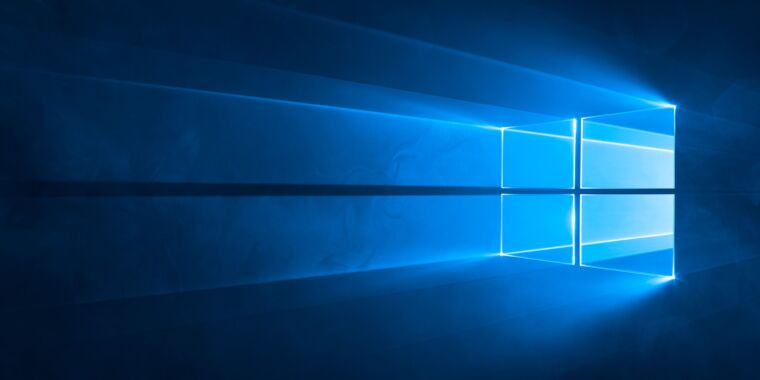Microsoft
In the last two years, Windows 11 has ushered in significant updates for most of Windows’ built-in apps, and things like the system tray, Start menu, Settings app, and taskbar have continuously evolved with each new update. But few of these changes have been made available for Windows 10, which is still, by every publicly available metric, the most-used version of Windows on the planet. (Notable exceptions include the redesigned Outlook app and continued development of Microsoft Edge.)
Today, the company is making a major exception: The new AI-powered Windows Copilot feature from Windows 11 is being backported to Windows 10 and will be available in the Windows Insider Release Preview channel for Windows 10. This version of Copilot, which will be branded as a preview at first, will be available for the Home and Pro versions of Windows 10. But it won’t be available for the “managed” versions of Windows 10 just yet—Enterprise and Education editions, as well as Pro PCs that are joined to a domain or are otherwise managed by an IT department.
“We are hearing great feedback on Copilot in Windows (in preview) and we want to extend that value to more people,” writes Microsoft in a separate blog post. “For this reason, we are revisiting our approach to Windows 10 and will be making additional investments to make sure everyone can get the maximum value from their Windows PC including Copilot in Windows (in preview).”
The Windows 10 version of Copilot will require a PC with 4GB of RAM and at least a 720p display to run; all Windows 11 PCs meet these requirements, so Microsoft didn’t need to define these minimums before now. The feature will roll out to North American users and those in “parts of Asia and South America” first and then to other countries “over time.”
Microsoft’s blog post is a bit light on what Copilot for Windows 10 can actually do. The Windows 11 version can change various system settings and work with documents stored on your PC; the screenshot Microsoft has shared of the Windows 10 version looks mostly focused on Bing Chat-style, ChatGPT-powered text generation.
The Windows 10 November preview update that includes Copilot also makes a few other small changes, including a long list of bug fixes. It also includes Windows 11’s “get the latest updates as soon as they’re available” toggle in Windows Update, which when enabled will install preview updates automatically rather than making you do it manually.
Though this is the biggest update that Microsoft has released for Windows 10 since Windows 11 replaced it in late 2021, it doesn’t change anything about Windows 10’s broader support timeline. Version 22H2 remains the last major update available for the OS, and security updates are still scheduled to end on October 14, 2025, less than two years from today. Microsoft representatives avoided answering questions about Windows 10’s persistently high usage and the number of PCs that would be unable to upgrade, only saying that Windows 11 adoption was exceeding Microsoft’s internal targets.
Though some of those PCs will be able to upgrade to Windows 11 to continue getting security updates, the newer operating system’s more stringent system requirements leave a substantial chunk of Windows 10 PCs behind. It’s not clear just how many PCs that is, but Windows 11’s adoption has slowed in recent months and Windows 10 is still by far the most-used version of the operating system.
Even though Windows 10’s end-of-support date is creeping up on us, it’s easy to see why Microsoft is extending Copilot support to the older OS. According to Statcounter data for US PCs and devices worldwide, Windows 10 still accounts for over two-thirds of active Windows installs. These users can access some AI functions via the version of Copilot that’s built into Microsoft Edge, but Edge only accounts for around 10 percent of all desktop browsing in the US.
Extending Copilot to Windows 10 is a way to get the service in front of many users who otherwise wouldn’t access it. And for better or worse, that’s been Microsoft’s strategy for 2023: casting as wide a net as possible with its AI efforts, getting them in as many of its products as possible as quickly as possible.
Denial of responsibility! My Droll is an automatic aggregator of Global media. In each content, the hyperlink to the primary source is specified. All trademarks belong to their rightful owners, and all materials to their authors. For any complaint, please reach us at – [email protected]. We will take necessary action within 24 hours.


